Roadside alleys
It is believed that Europeans began planting trees along roads after Marco Polo returned from China. The Kaliningrad region is strikingly different from the rest of Russia not only by its red tile roofs. Everyone who visits our region first of all pays attention to the roads with trees growing along the sides.
We offer a translation of the second part of Adam Płoski's article about the roads and roadside alleys of East Prussia "The Road and Its Surroundings, Evidence of Historical Changes in Warmia and Masuria" (Adam Płoski Droga i jej otoczenie, świadectwa przemian historcznych na Warmii i Mazurach ). The article is published with minor abbreviations.
Roadside alleys are a feature of the region
As early as the 13th century, the then ruler of China ordered trees to be planted on both sides of the roads, two steps away from the roadside. Damage caused to roadside plantings could be punished by death. Of course, not all Chinese inventions were adopted by Europeans, but roadside trees took root in Europe. The Italian architect Andrea Palladio [1] in his work “Four Books on Architecture” (I Quattro Libri dell'Architettura, 1570), among other general architectural principles, recommended planting trees along the roadsides, since they provide shade, decorate the surroundings and give pleasure to the soul.
The problems of regular plantings along roadsides were not initially a subject of special attention in Prussia. As early as the 17th century, trees were used only to mark the boundaries between parishes or villages. Later, local roads, which were the majority at that time, began to be planted with willows along the roadsides. The impetus for this was the decree of Friedrich Wilhelm I (1713-1740), who was the first of the Prussian kings to pay attention to the problem of planting trees along roads. But the most complete instructions on the rules for planting trees (a separate paragraph was devoted to this issue) were contained in the decree of Friedrich the Great (1740-1780) of June 24, 1764, according to which willows or other trees were to be planted along the roadsides of local importance, postal routes and roads of national importance, including military ones.
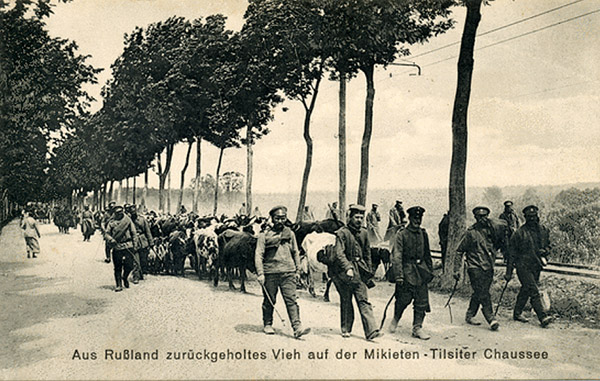
From then on, most roads with trees planted along them were called by the French word "alley". Punishment was imposed for the destruction of roadside trees. A year later, a decree on the planting of forests was issued, which also paid attention to roadside trees. According to it, the choice of tree species for planting was the prerogative of the local administration, which was given the opportunity to choose from several species: oak, linden, birch, willow and poplar. The width of the road was determined at 20-30 feet (6-9 m). There were to be ditches on both sides. Instructions from 1814 and 1834 determine the distance between trees along the roadsides. The first says 18 feet (approx. 5.5 m), the second - 10-35 feet (approx. 3-11 m). It was also ordered to install stone barriers along the roads so that carts and wagons would not damage trees.

Numerous local circulars issued in different years defined requirements for road maintenance (1850, 1853), and also ordered, among other things, road owners to draw up annual plans for their repair and establish the degree of punishment for the destruction of roadside plantings.
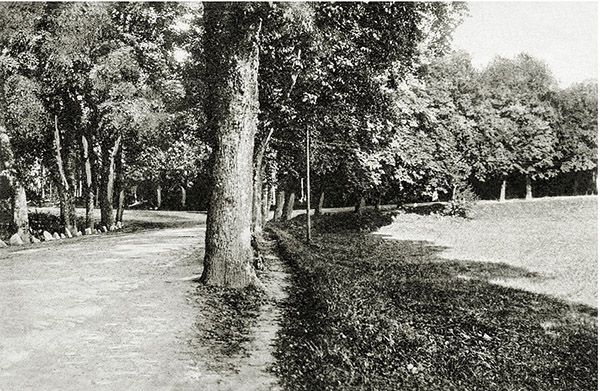
Issues related to roadside trees were also addressed in regulations and orders of departments not directly related to them. For example, the law on telegraph lines (Telegrafenwegegesetz) of December 18, 1899, regulating their construction, prescribed the utmost care for roadside plantings, and in the event of damage to them, the state was obliged to compensate the owner of the land on which the trees were planted. In 1911, a decree concerning the roads of the province of East Prussia (Wegeordnung für die Provinz Ostpreussen) was issued, which defined requirements, including for the planting of trees along roads. Control functions for the implementation of this decree were assigned to the traffic police.
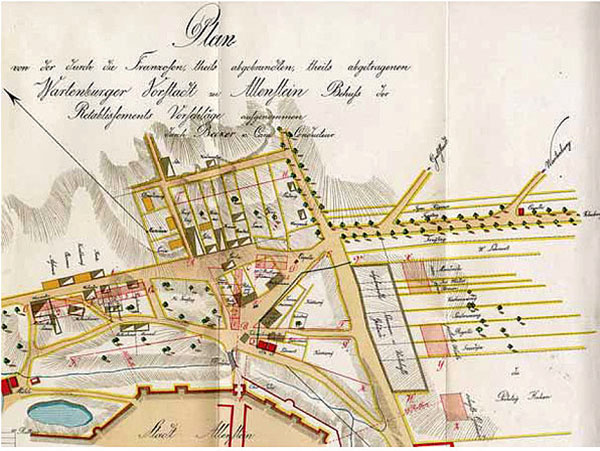
Particular attention was paid to the issue of liability for damage to roadside trees. According to the order of Friedrich Wilhelm I (1731), those who intentionally damaged trees were subject to punishment in the form of forced excavation work to build fortifications. Later, in 1797, a fine was imposed for damaging a roadside tree (on the contrary, anyone who reported the offender was entitled to a reward), the culprit was put in stocks and obliged to compensate for the damage with work. In special cases, the culprit was tied to a pillory (from 10 a.m. to 4 p.m.), and a sign in German and Polish with the inscription "tree wrecker" was hung around his neck. The culprit was also obliged to plant exactly the same tree. Later, the punishment became only a fine of 5 thalers for each damaged tree (1840).
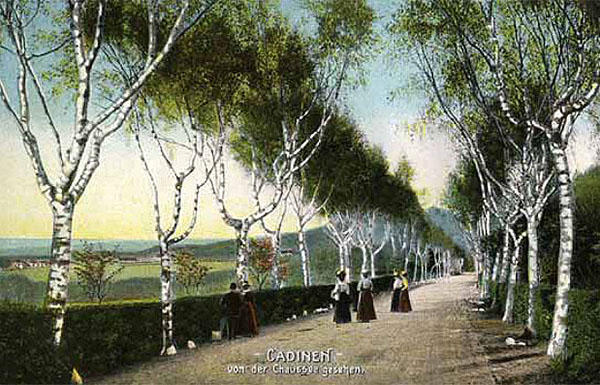
Trees were planted along roads primarily for practical reasons, so that travellers would not lose their way in the dark and troops moving along the roads would have shade. Krzysztof Celestyn Mrongowiusz [2] wrote the following in his poem in 1835: “… Without trees it is bare / Sad / On the road the sun blinds the eyes…” (Bez drzew goło, / Niewesoło, / W drodze słońce bije w czoło). In winter, trees protected roads from being covered with snow. They reduced the “monotonousness” of the journey, thereby reducing fatigue. This primarily applied to travellers on foot.
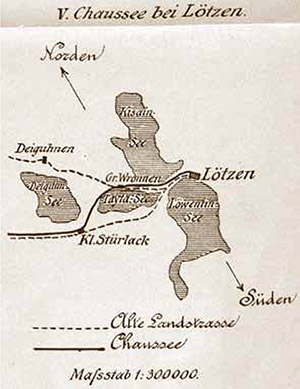
Roadside plantings on the so-called Schrötter maps [3], created in 1796-1802, are already marked along postal routes and main roads. Based on detailed field measurements carried out by a team of cartographers, they are considered the most accurate maps of northern Prussia and Poland in the early 19th century, and serve as an invaluable source of information on the condition and density of the road network of that time in the territory of Warmia and Masuria. The maps show many objects that in one way or another formed the road infrastructure - roadside inns, inns, bridges, etc.
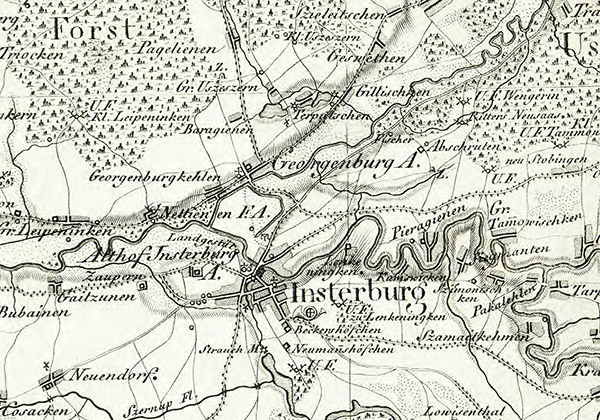
Alleys to a certain extent formed and protected the roadside landscape in a natural way. In 1822, the Union for the Development of Horticulture was founded in Prussia, which aimed to improve the landscape, including the arrangement of alleys.
In the mid-19th century, work began in France to select tree species that were best suited for forming alleys. The first private nursery with trees for planting alleys appeared in Berlin. Trees became an important part of the landscape and human habitat not only in East Prussia. For example, in the permit for building a house in Żabno (a territory of Poland that was once part of Austria-Hungary), in addition to the standard requirements, there was an order to plant trees as densely as possible around the house.
The planting of mulberry trees, the seedlings of which were imported from China, was encouraged in Prussia at the state level. But in East Prussia this did not produce any significant effect (although old mulberry trees can still be found here and there in Kaliningrad. — admin ). Even a special decree from 1742 did not help, according to which a multi-year subsidy was due to those who created a mulberry nursery or began to grow them. In addition, instructions were developed regulating the planting of trees in villages and, among other things, requiring homeowners to lay out gardens and plant pussy willows and willows near their homes. It was also prescribed to plant trees along the boundaries of property (Dorf Ordnung, 1723).
Almost all new roads built in the 19th century were planted with trees. According to existing regulations, the owner of the land through which the road passed was obliged to constantly maintain roadside ditches in proper condition, plant trees and install stones along the roadsides to protect trees from damage. In accordance with the decrees of Friedrich Wilhelm IV of February 16, 1841, the reconstruction of old roads was to be carried out, if possible, with minimal damage to roadside trees. It was prescribed to avoid cutting down trees. It was proposed to use linden, oak, chestnut, birch, poplar, etc. for new plantings. At the same time, poplars were supposed to be planted at some distance from the roadside due to their shallow root system, which could damage the road surface. At that time, these trees were very popular and were planted not only along roads.
Road construction specialist and professor at the Polytechnic Institute in Lviv, Artur Kühnel, wrote that poplars stand out against the surrounding landscape and mark roads very well. Their appearance from afar promises a traveler shelter and a place to stay, showing the way to them. It is necessary to preserve the healthiest and most beautiful specimens of trees in memory of history. (Here, one can pay attention to the fact that the position is put forward about the need to protect trees out of respect for their past and tradition.)
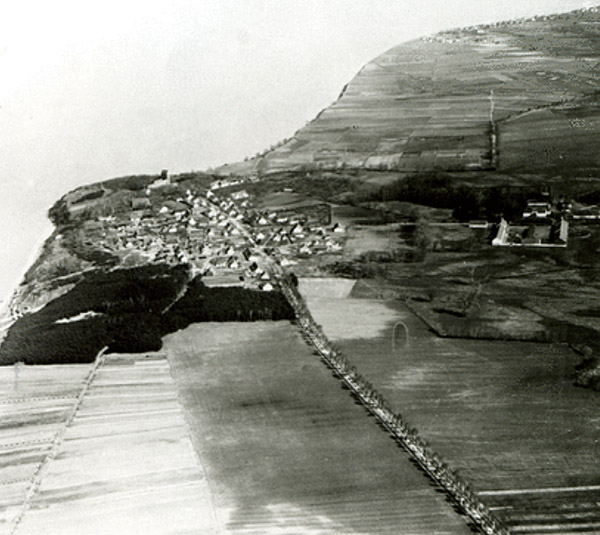
On the basis of the decree of October 14, 1854, permission was granted to plant fruit tree alleys. In Prussia, it was proposed to plant fruit trees along roads as early as 1752. Fruit trees were planted especially often along the roadsides in the immediate vicinity of settlements. Road owners often leased the roadsides for planting fruit trees along them, thereby shifting the responsibility for the condition of the alleys to the lessee. Obviously, fruit trees could bring material benefits to their users. Advertisements for the lease of fruit alleys were not uncommon in the local press of those years. For example, in 1878, the newspaper "Allensteiner Kreisblatt" placed an advertisement for the lease of an alley of cherry trees near the village of Nickelsdorf (Nikelkowo) by the authorities of the Krais Allenstein (Olsztyn). There are also advertisements for renting out roadside ditches, on the slopes of which it was possible to mow grass. Not quite typical for East Prussia was the road along the Curonian Spit, on the sides of which pine trees specially brought from Spain were planted to protect against sand.
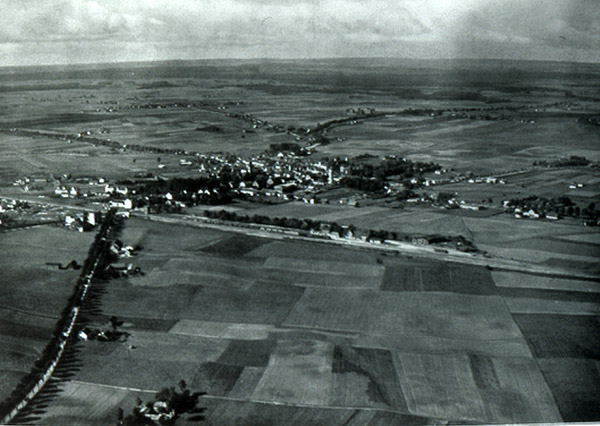
In the 19th century, the rapidly expanding railway network began to compete with the roads. At the same time, new access roads to the railways were built, which led to the expansion of the road network. And, in accordance with tradition and regulations, trees were also planted along the sides of these access roads.
Roadside alleys were protected by the state. The local press published advertisements calling for monetary rewards to inform on those who deliberately damaged trees. District departments published collections of orders and instructions for specific officials regarding road maintenance. They often contained provisions concerning alleys. Road services, which were responsible for bridges, roads and roadside plantings, were charged with maintaining alleys.
In the 1920s, alleys, as paradoxical as it may seem from today's point of view, served a traffic safety function. The trunks of roadside trees and protective stones were painted white at the level of the light beam of car headlights. The widespread use of cars became the reason for the expansion and modernization of roads. By this time, the issues of organizing roadside plantings had a solid theoretical basis. Specialized literature on road construction was published. Researchers in the field of roadside alleys recommended planting the following tree species: elm - a first-class tree for forming alleys with a straight trunk and a wide, dense crown, birch, which was also excellent for these purposes, as well as oak, linden and ash. In East Prussia, tree planting events were often organized by schoolchildren. One- and two-year-old seedlings grown in special nurseries were used. The cost of planting one such sapling was 2.64 marks, while the cost of saplings (for example, silver linden) reached 4.5 marks. Thus, the cost of planting one sapling of the most common species before the First World War was from 4 to 8 marks. The maintenance of each planted tree (watering, pruning, fertilizing) cost 25 pfennigs annually. Compared to others, such costs did not seem too high. Permission to plant trees was issued by the official responsible for the condition of the alleys. His duties included conducting an annual (in August) inspection of all roadside plantings, as well as monitoring them in the fall and early spring. At the same time, new alleys were planted.
The construction of state roads in East Prussia was primarily due to military and economic reasons, but attention was also paid to satisfying the needs of the post office and residents of the territories for new roads. The construction of new roads was accompanied by the appearance of new alleys and the renovation of old ones. This continued until the 1930s. Similar measures were also carried out by private landowners, laying out private alleys to their palaces, estates, manors and railway stations.
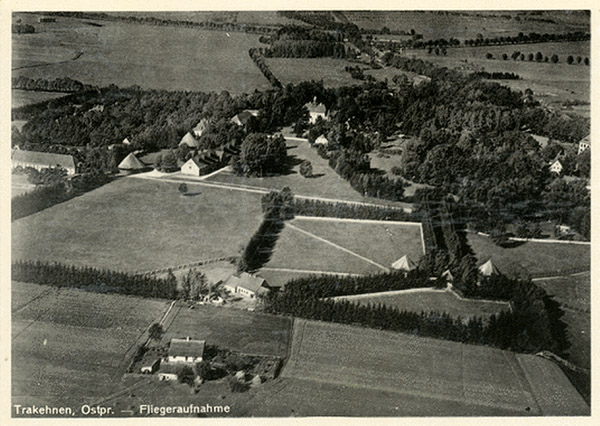
As a traveler who visited Masuria in 1896 noted, "... all the roads here, without exception, are lined with trees. A sense of respect for trees is instilled here from school, and at every step you come across signs nailed to the trunks reminding you that a kind person will not harm a tree."
Roads of Warmia and Masuria after 1945
After the annexation of part of East Prussia to Poland, changes occurred in the road network. Part of the road infrastructure was destroyed, as the Wehrmacht troops destroyed bridges behind them during their retreat, and some roads changed their meaning. The new inhabitants of Warmia and Masuria, however, realized the importance of roadside alleys for the landscape, understood that the venerable lindens, maples, and birches growing along the roads give the area a unique charm and are strikingly different from the dull landscape of flat plains devoid of woody vegetation. This was also helped by legislative norms, which formulated the postulate that the purpose of planting roadside trees is the cultivation of beauty in road construction. A road can become both a destructive factor in the surrounding landscape and a creative one. A correctly planted alley is a decoration of the landscape, creating a transition from the natural landscape to the correct architecture.
At various times, more than 100 million tree saplings and 60 million shrubs were planted in Warmia and Masuria as part of the afforestation program. In addition to special services, scouts [4], schoolchildren, and workers from collective and state farms took part in these events. In addition, all new roads in Poland were obligatorily lined with trees along the sides.
Notes:
1. Andrea Palladio ( Andrea Palladio , real name Andrea di Pietro, 1508 - 1580) - an outstanding Italian architect, the founder of classicism, the author of works on architecture. He worked mainly in Venice and Vicenza.
2. Krzysztof Celestyn Mrongowiusz (1764-1855) - Polish philologist, translator, Lutheran pastor.
3. Friedrich Leopold Reichsfreiherr von Schrötter (1743-1815) - Prussian minister, chief president of the provinces of West and East Prussia. Under Schrötter's leadership, maps of East and West Prussia were compiled and published in 1796-1802 on a scale of 1:50,000 ( Karte von Ost-Preussen nebst Preussisch Litthauen und West-Preussen nebst Netzedistrict 1796-1802 ).
4. Scouts - The Union of Polish Scouts ( Związek Harcerstwa Polskiego, ZHP) is a youth scouting organization that has existed intermittently since 1910 to the present day.
Sources:
Bildarchive
original article
